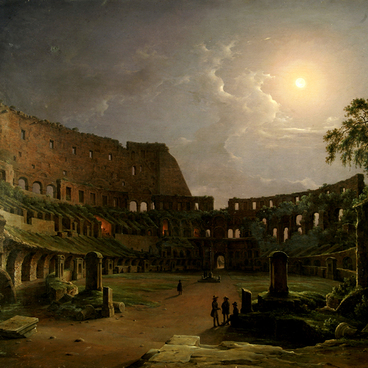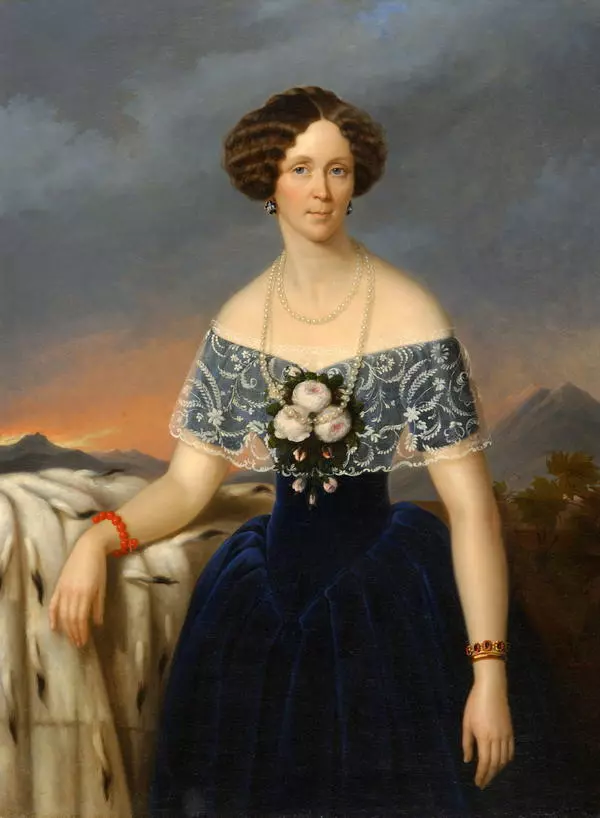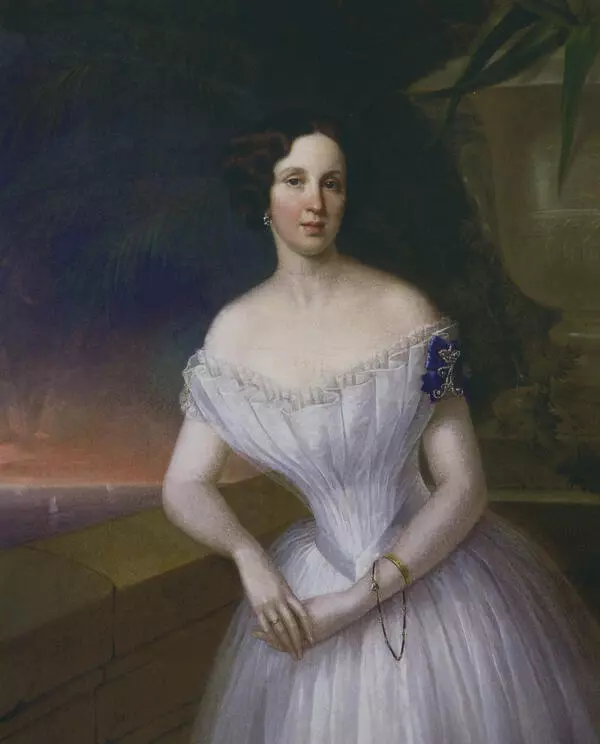‘The Bather’ is a painting by Gavriil Yakovlev, an academician of portrait painting at the Imperial Academy of Arts. He was awarded the title of academician for the portrait of artist and professor Fyodor Bruni, three years before painting ‘The Bather’.
‘The Bather’ was painted during the artist’s period of creative flourishing. It coincides with the time of Yakovlev’s work on the decoration of the cathedral in the Voskresensky Novodevichy Monastery in Saint Petersburg, where he also taught painting to the sisters of mercy. For five years, Yakovlev worked gratuitously on decorating the cathedral, and in September 1861 he received the award of the Order of Saint Stanislaus.
In that period the artist took an interest in the biblical subject from the book of the prophet Daniel and the history of Babylonian Susanna. The incomparable beauty of Joachim’s faithful wife became the object of desire for the two elders who were guests in their house. Every day they tried to find the young woman alone in the garden bath, without a maid. When this happened, Susanna refused the elders, not being afraid of threats of an unfair judge for adultery. Even though the judges fulfilled their threat and lied about the young woman, the prophet Daniel was sent in answer to her prayers, denouncing the elders of their lies and publicly justifying her.
Many artists have addressed this plot. There are similar works by Giovanni Battista Tiepolo, Tintoretto, Paolo Veronese, Rembrandt, Rubens and many others. The story of the pious Susanna also inspired the painter’s contemporaries, Russian artist Grigory Lapchenko and the Italian Domenico Induno. This story had many interesting interpretations in the 20th century, one of the examples is the work of the Soviet artist Lev Kotlyarov.
The artist depicts Susanna before the ablutions, when she anxiously looks around, suspecting the presence of strangers. Contrary to the well-established iconography, Yakovlev refuses to paint the elders, leaving them outside the boundaries of the canvas. The naked female body on his canvas impresses with touching chastity, and the perfection of forms created according to the ancient canons of beauty.
This is partly due to the fact that at that time, Russian painters could not have the luxury of sketching from a nude female nature. Like most European Academies, Imperial Academy in Saint Petersburg used exclusively male models until the end of the century.
‘The Bather’ was painted during the artist’s period of creative flourishing. It coincides with the time of Yakovlev’s work on the decoration of the cathedral in the Voskresensky Novodevichy Monastery in Saint Petersburg, where he also taught painting to the sisters of mercy. For five years, Yakovlev worked gratuitously on decorating the cathedral, and in September 1861 he received the award of the Order of Saint Stanislaus.
In that period the artist took an interest in the biblical subject from the book of the prophet Daniel and the history of Babylonian Susanna. The incomparable beauty of Joachim’s faithful wife became the object of desire for the two elders who were guests in their house. Every day they tried to find the young woman alone in the garden bath, without a maid. When this happened, Susanna refused the elders, not being afraid of threats of an unfair judge for adultery. Even though the judges fulfilled their threat and lied about the young woman, the prophet Daniel was sent in answer to her prayers, denouncing the elders of their lies and publicly justifying her.
Many artists have addressed this plot. There are similar works by Giovanni Battista Tiepolo, Tintoretto, Paolo Veronese, Rembrandt, Rubens and many others. The story of the pious Susanna also inspired the painter’s contemporaries, Russian artist Grigory Lapchenko and the Italian Domenico Induno. This story had many interesting interpretations in the 20th century, one of the examples is the work of the Soviet artist Lev Kotlyarov.
The artist depicts Susanna before the ablutions, when she anxiously looks around, suspecting the presence of strangers. Contrary to the well-established iconography, Yakovlev refuses to paint the elders, leaving them outside the boundaries of the canvas. The naked female body on his canvas impresses with touching chastity, and the perfection of forms created according to the ancient canons of beauty.
This is partly due to the fact that at that time, Russian painters could not have the luxury of sketching from a nude female nature. Like most European Academies, Imperial Academy in Saint Petersburg used exclusively male models until the end of the century.





